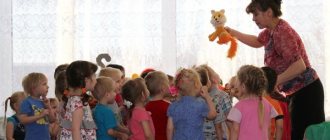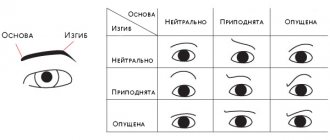Most parents, paying a lot of attention to the development of thinking and speech in children, forget about the importance of developing the emotional aspect of a young personality. Exercises and games on emotions already in preschool age make it possible to identify and promptly correct possible problems in a child’s ability to express his feelings, as well as to adequately respond to the feelings of others.
Why is it important?
A person begins to experience emotions much earlier than to speak and think. If the baby is dissatisfied with something, he screams, sometimes reaching hysteria, and when he is happy, he laughs and waves his arms. This behavior can also be observed in adults, provided that the emotions are too strong - so much so that the person, like a child, is unable to control them. But this does not mean that the main task of teachers and parents is to teach children external restraint worthy of a Soviet intelligence officer.
It is necessary to engage in the development of the emotional sphere of preschoolers in order to:
- teach to better understand oneself and others, cultivate social sensitivity and empathy;
- give the right direction to the emerging system of generally accepted values (kindness, responsiveness and compassion must harmoniously coexist with the development of such qualities that are in demand today as leadership, perseverance, stress resistance);
- make the process of mastering any other skills more productive by adapting to the learning conditions.
In addition, scientists have identified a direct connection between a person’s level of emotional intelligence, that is, the ability to correctly understand the feelings, desires, intentions of other people and one’s own, with his success and even income level.
Dear adults!If possible, avoid restrictions on the child’s natural behavior: do not forbid him to laugh loudly, scream or cry if external conditions allow it. The habit of suppressing emotions leads to mental disorders.
The game is intended for the emotional and intellectual development of children aged 5-9 years. Children become familiar not only with the names and characteristic external features of the 8 basic (innate) emotions, but also learn to distinguish and compare emotional sensations, both their own and those of others. Mood is a stable experience of emotions. By playing with emotions, kids will learn to control their own mood, which will positively affect their relationships with the outside world. In our theater there are 8 main roles: Interest, Joy, Surprise, Sadness, Anger, Disgust, Fear, Guilt, presented in the form of masks. In addition, 4 characters participate, by whose appearance children must determine their role and emotion. The game develops voluntary attention and thinking and is suitable for those who can read and those who are learning to read.
GAME COMPLETENESS:
1. 8 mask cards;
2. 4 cut cards with characters (32 pieces);
3. Envelope for cards;
4. Rules.
Cut the paired mask cards in half into separate cards, and the character cards into small cards (32 pieces).
RULES OF THE GAME
OPTION 1.
Invite the children to carefully examine the mask cards and draw their attention to the variety of external signs of the manifestation of emotions, their differences and similarities. Talk about when a particular emotion arises. Distribute the mask cards equally among the players. Let everyone try to depict this emotion on their face. The presenter shows small cards one at a time, choosing at random. Children must collect 4 cards for their mask with characters experiencing the same mood: cards with joyful characters are collected for the mask of joy, cards with sad characters for the mask of sadness, etc. The one who collects his heroes faster than others wins.
OPTION 2. "One actor theater"
This game only involves single cards. The players' task is to collect all the pictures related to one character. The presenter distributes one card with a hero. After this, the players take turns passing the rest, one card at a time, to their neighbor on the left, in a circle, one at each turn. The player keeps cards that are suitable in content. The first one to collect his character's emotions wins.
OPTION 3. "Master Class".
Put on an impromptu performance!
The game involves all cards and cards that are folded together, face down. Players take turns choosing a card or card and, without revealing its contents to other players, depict this emotion and character. The rest of the participants guess the mood by facial expressions and pantomimes.
The one whose performances were more successful and understandable wins.
4 OPTION. "Golden Mask".
Only mask cards are used in the game. They can be cut along the lines into 4 parts. These parts are turned over and mixed. Children, choosing one at a time, must reassemble the mask. The one who collects the mask the fastest wins.
Examples of games for learning basic emotions
The world is colored by emotions for a person from birth, and the older a child becomes, the more vivid and varied feelings he is able to experience. When talking about the need to develop the emotional sphere, we usually mean working with the expression of negative feelings:
- anger,
- resentment,
- disappointment,
- envy,
- fear.
Being able to cope with them is really important not only for preschoolers, but also for adults, and the sooner a person learns this, the more stable his psyche will be. At the same time, we must not forget about positive, bright emotions - joy for oneself and for others, gratitude, sympathy. They must be in balance with the negative ones or even prevail over them; it depends on whether the personality will be whole and the person happy.
Kaleidoscope of moods
It’s best to start getting acquainted with psychological games with an overview of basic emotions. The presenter invites preschoolers to look at several cards with photographs of children: smiling, laughing, crying, angry, surprised, puzzled, and so on. Let the kids try to figure it out, discuss how the hero feels in each photo, and guess what might be causing his mood.
Try it on yourself
The game continues the previous one. The adult asks the children which of the presented emotions they themselves experienced and in what situations, which card best conveys their mood now. Preschoolers are given the opportunity to speak one by one, first at will, then at the request of the leader. The example of more active children has an infectious effect on others, so the exercise not only teaches you to recognize emotions, but also helps to overcome timidity.
If one of the children is silent and does not want to answer, there is no need to insist. Most likely, he mentally participates in the game and tries on different emotions for himself, but is embarrassed to speak out loud.
Boxer
Expressing anger is sometimes more important for a child than for an adult. For a person tired of pent-up discontent, psychologists recommend hitting a punching bag. A similar exercise is also useful for children starting from the younger or middle group. A newspaper acts as a pear: two children stretch the wide sheet and hold it tightly, and the third hits the center with all his might. At the same time, it is allowed to shout out phrases, for example: “Anger, go away!” or “Here, get it!” If a child just wants to scream, without words, this is also allowed. All children take turns playing the role of holding the newspaper and boxers.
If the newspaper tears too easily, increase the number of layers. Most likely, this will be needed when the children play in the second round.
Chest with lock
This is a peaceful alternative to the violent manifestation of negative energy accumulated within, described in the previous game. The children sit in a circle, and the leader, in turn, approaches each of them with a chest (a small box, preferably decorated accordingly), so that the kids whisper into the slightly open lid all their possible troubles and grievances. To prevent participants from being disturbed by silence, they need to turn on calm music. When all the experiences have been collected, the presenter announces that the magic circle has closed, the lock has closed, and all the bad things remain inside. The chest has spent all its energy and is sent to recharge, after which it will be ready for use again.
TV
A creative game that is suitable for children in the preparatory or even senior groups. For it you will need a cardboard frame, which will represent the TV. One of the participants stands in front of the others and points the screen at his face, while depicting any emotion: fear, joy, sadness, surprise, delight. The rest must determine what is shown on TV today. Depending on the number of children, you need to set a certain mood limit. For example, if there are many participants, let each one show only one emotion, trying not to repeat themselves. If an adult plays with one child, he first shows several moods himself, and then provides this opportunity to the baby.
Older preschoolers can, if they wish, turn the TV into a theater stage and act out small scenes, and the audience will discuss what emotions the characters had and why.
Robot
The game is similar to the previous one, but the task here is more complex: now the intended feelings are allowed to be conveyed only with the help of the hands and body, without the participation of the face. The leading participant is announced as a humanoid robot whose facial muscles have turned off, and now his mood can only be determined by his posture and movements. The exercise will help children learn to better understand body language.
It is interesting to try two versions of the game: with a box on the head representing a robot and covering the face, and without it. In the first case, participants will be able to frown or smile imperceptibly, and then it will be easier for them to synchronize the desired emotion with their movements. Without the box, the child will have to maintain a neutral facial expression, this will make the task difficult for both the presenter and the guessers.
Invite viewers not just to name the emotion they see, but to “sign the picture” - that is, as if to come up with a title for the photo: “Hurray, they bought me a bicycle!” or “My car was broken, I’m so angry!”
Masks for little people
The exercise develops empathy. You need to schematically draw a funny man with an empty circle instead of a face and prepare several masks for him in size with a variety of expressions. The presenter tells what is happening to the hero, and the children change his masks depending on what emotions, in their opinion, he is experiencing.
For example: “The little man looked out the window and saw that the sun was shining! (mask-smile). Suddenly he heard someone crying (surprise, confusion). It turned out that it was a girl crying, she had lost her doll (sadness). The little man jumped out of the house and helped her find the doll (joy). It is important that children realize that people feel sad when someone is sad, and joy when their help leads to a positive result.
But!..
The ability to endure disappointments for the psyche is the same as hardening for a person’s physical health. This game teaches you to find positive moments even in unpleasant situations and is suitable for preschoolers of different ages.
The presenter shows the kids a card with a picture of a sad character (for example, a bunny) and says that the bunny is sad because all his brothers and sisters went for a walk and left him at home. The children’s task is to “comfort” the hero, to find several reasons for joy, starting with the word “but”: “But now no one bothers you to watch TV” or “But now you will eat all the candy alone.” When the presenter considers that there are enough reasons for a good mood, instead of a card with a sad bunny, an image of a cheerful one appears.
With older children, it is convenient to use the drawn little man described above with a set of prepared emotions. If there are not enough masks, the children can complete them themselves and change them at their discretion.
Musical mood
Even babies who cannot speak enjoy happy music and are capable of crying from sad music. These are unconscious emotions that cannot be controlled. How do preschoolers understand the mood of music? Have them listen to a short passage and share what feelings it evokes: fun, sadness, fear, a sense of celebration, playfulness, solemnity, tension, coldness. Exercise contributes not only to the enrichment of emotional experience, but also to the development of imaginative thinking.
The magic of intonation
The presenter says a word or short phrase in a neutral tone, for example: “Aha,” “Well, that’s all,” “The little gray top will come,” or any other. Children take turns repeating the phrase, using different intonations indicating joy, sadness, fear, surprise, threat, and the like. The rest must understand exactly what emotion the speaker had in mind and evaluate how correctly he portrayed it. The game develops the ability to convey and recognize emotions, and also teaches how to use expressive means of voice.
Discuss the music you hear with your child in everyday life, ask questions about his favorite cartoons and fairy tales. The baby will be pleased to share his experiences, and you will learn more about how he can understand emotions.
Will you go to the ball?
The increased emotionality of preschoolers is explained by the fact that they are childishly impulsive and do not yet know how to restrain the external expression of their feelings. This ancient game teaches you to control impulsive actions, keeping maximum attention on the task at hand.
The host announces the rules: “Don’t wear black or white, don’t say “yes” or “no,” after which he asks the first question: “Will you go to the ball?” The participant must answer: “I will go.” Next, the host asks various questions, trying to provoke the players to utter forbidden words: “Will you wear a white dress or a black one?”, “Will you eat ice cream at the ball?”, “What pieces will you play chess with?” The guys have to get out of it, quickly finding substitute words or avoiding the answer. Gradually their vigilance is weakened, and the player who made a mistake becomes the leader.
Several decades ago, children easily managed without special games - their rich experience of live communication helped them understand the emotions of other people and their own. Modern preschoolers, teenagers and, importantly, their parents are increasingly moving into the virtual world; the whole range of their moods fits into a standard set of emoticons. That is why it is necessary to pay attention to the development of the emotional sphere in preschool age, otherwise problems will begin when children turn into teenagers. Moreover, the key role here should be played not by teachers and educators, but by parents and family.
Outdoor games to develop emotions for an active child
- "Guess the mood." The goal of the game is to recognize emotions and express them through movements. Children play the role of bees. Each bee has its own mood. At the command “The bees have flown!” a child or group of children expresses emotions and mood through movements. At the command “The bees have landed!” the kids freeze. The presenter (one of the children) approaches each “bee” in turn and names what mood she was in. In response, the “bee” can tell her story (what happened to her, and why she was in such a mood). This will help children identify emotions more accurately.
- Role-playing game "Sculpture". One or more children are chosen to play the role of “clay”. The rest are “sculptors”. The goal of sculptors is to “sculpt” a figure or composition that expresses certain emotions of children. For example, the figure of a child who has lost his mother and is crying. Or a composition of two kids (one supposedly hit himself, the other calms him down). The options can be very different. In addition to developing emotions, this game contributes to the formation of such social skills as the ability to negotiate. Children experience positive experiences from cooperation in a group.
- "Man and Reflection". One of the participants demonstrates emotions in the game, actively moving (plays the role of a “person”). The other becomes a “reflection”, exactly repeating the actions of the first. If there are many children, they can be divided into pairs. At the command “Stop” the pairs stop. The one who played the role of “reflection” must name the feelings and emotions of the child as a “person”. Then the participants change roles.
A common characteristic feature of such games is the expression of emotions through movement and action. Most of all, they will appeal to children who naturally have special flexibility and dexterity of the body and love movement and physical exercise. System-vector psychology of Yuri Burlan defines them as carriers of the skin vector.
It is more difficult for such children to keep up with books and board games for the development of emotions. In outdoor play, it will be easier for them to express emotions. In addition, their “gutta-percha” body allows them to convey the nuances of various feelings and states through movement.
These emotional games can be used for preschoolers and kindergarten groups. And for schoolchildren - during children’s leisure time. In addition, any of the described game options can be simplified and used at home, in a “child-adult” pair.






